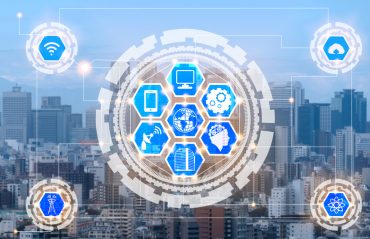
Getting started with the IoT will require organizational plumbing.
The Internet of Things holds an abundance of promise for enterprises seeking to expand their relationships with customers and have a real-time view of how products and services are delivered and used.
However, businesses will need to perform data and systems plumbing to handle the huge new workloads that will result from IoT. Most importantly, the operational side of the house needs to be brought together with the technology side – it’s never been more important for these two areas to be in complete alignment. Implementing IoT strategies is not a one-size-fits-all endeavor — nor can it be bought off the shelf.
That’s the key consensus of participants at the latest BriefingsDirect panel, hosted by analyst Dana Gardner. As pointed out by Jeff Carlat of Hewlett Packard Enterprise (HPE), “jet engines that are being used today are generating 5 TB of data every time they land or take off. Imagine that for every plane, every engine that’s flying in the sky, every day, every year. The amount of data is huge.” Enterprises that Carlat deals with “are asking where to start… This is overwhelming, this is complex. How do we do this?”
Purely technological approaches to handling IoT scale may not be the entire answer, observes Tushar Halgali of Deloitte Consulting. “Traditionally, organizations have been solving technology-related problems as all information technology-related problems. We’re trying to get machines to connect to the Internet and have them communicate with each other. There are a lot of complexities involved. It’s not just the IT pieces, but having the operational technology connect to the IT world, too. It creates a very complex ecosystem of components.”
IoT operations
The operational technology side of IoT is where the business value is realized in a powerful way, panelists agreed. “We can measure, we can analyze, and we can communicate,” Gardner says. “That gives us a lot of power. We can move toward minimum viable operations, where we’re not putting parts in place when they’re not needed, but we’re not going down either.”
Halgali observes that IoT plays a key role in determining the optimum timing for many aspects of predictive maintenance and beyond. “You don’t want to do it too soon because you’re just spending money unnecessarily and it’s not efficient. You don’t want it too late, because then there’s downtime. So, you want to find the equilibrium between the two. IoT determines the right window for when that maintenance needs to be done. If there’s a valve problem, and something goes down quickly, sensors track the data and we analyze the information. The minute that data goes off a certain baseline, it will tell you about this problem — and then it will say that there’s the potential in the future for a major problem.”
Panelists provided advice on getting started with this transformation to an IoT-driven process culture.
“Anytime you do an IoT initiative, the key thing to realize is that it should be part of a major digital transformation initiative,” says Halgali. “Like any other transformation story, there are the people, process, and the technology components.” He points to looking at a “smart factory” as an example of the end result of such an effort. “What’s the value chain for an organization that’s making heavy machinery, end-to-end, all the way from planning, to logistics, and after-sale repairs, the entire value chain? What does that look like in the new generation? Decompose that into processes and use cases, identify which are the most high-value use cases, and quantify them.”
 Edge computing
Edge computing
The ability to manage IoT processes and analytics at the edge, versus in more ungainly centralized operations, is also a key strategy to move forward, panelists agree. “When you begin using edge devices, as well as geolocation services, you have this ability to do fine-grained policy management and access control for not just the people, but also devices,” says Halgali. “The surface area for IoT is so huge there are many ad-hoc points into the network. By having a security layer, you can control that and edge devices certainly help with that.”
The value of IoT arises from cost optimization, efficiencies, and risk management, Halgali continues. “By doing things on the edge, not only can you do all of those, you can start getting into the higher-value areas, such as revenue growth and innovation.” (See: “Five use cases for edge computing”).
An illustration of this would be remote monitoring in healthcare settings. “If we have certain devices in homes through sensors and everything, you can start tracking their behaviors and their patterns. When they’re taking medicine and those kinds of things, and have all the information created through profiles of those people. You have now distributed the power of taking care of all the constituents in your base, without having to have them physically be in a hospital.”
Such “feedback loops are not just one way where you can analyze, but you can start to apply the results, the benefits of the analysis, right back into the edge,” Gardner adds.






























